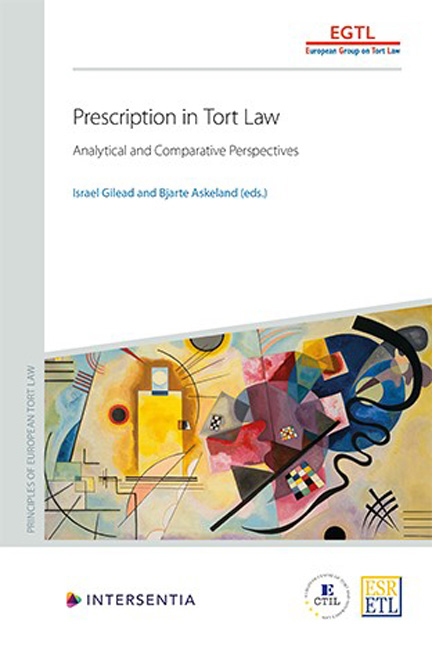Book contents
- Frontmatter
- Dedication
- Acknowledgements
- Contents
- List of Authors
- PART I THEORETICAL AND COMPARATIVE ANALYSES
- Analytical and Comparative Report
- Economic Analysis
- PART II PRESCRIPTION IN TORT LAW OUTLINED
- Case Scenarios
- Austria
- Belgium
- Czech Republic
- England and Wales
- France
- Germany
- Greece
- Italy
- The Netherlands
- Norway
- Poland
- South Africa
- Spain
- Switzerland
- United States
- European Union
- Appendix: Questionnaire
- About the Editors
Belgium
Published online by Cambridge University Press: 22 December 2020
- Frontmatter
- Dedication
- Acknowledgements
- Contents
- List of Authors
- PART I THEORETICAL AND COMPARATIVE ANALYSES
- Analytical and Comparative Report
- Economic Analysis
- PART II PRESCRIPTION IN TORT LAW OUTLINED
- Case Scenarios
- Austria
- Belgium
- Czech Republic
- England and Wales
- France
- Germany
- Greece
- Italy
- The Netherlands
- Norway
- Poland
- South Africa
- Spain
- Switzerland
- United States
- European Union
- Appendix: Questionnaire
- About the Editors
Summary
INTRODUCTION
The aim of the present report is‘to explore how (and why) the passage of time on an alleged tort claim affects (and should affect) the claim, the parties and other parties through the defence of prescription‘under Belgian law. The report refers exclusively to extinctive prescription (or, rather, liberating prescription) and nothing will be said about acquisitive prescription (prescription acquisitive/ verkrijgende verjaring).
In Belgium, prescription is primarily regulated by the Civil Code (arts 2219 ff). Furthermore, a few special prescription provisions have been adopted by the legislator (eg art 26 of the preliminary title of the Code of Criminal Procedure; art 8 bis of the Act of 30 July 1979 on fire and explosion prevention; art 23 of the Act of 22 July 1985 on civil liability in the field of nuclear energy; art 12 of the Act of 25 February 1991 concerning liability for defective products; arts 12 and 13 of the Act of 31 March 2010 concerning compensation for damage resulting from healthcare; art 88, § 2 of the Act of 4 April 2014 on insurances applicable to the claims covered by art 29 bis of the Act of 21 November 1989 on compulsory motor vehicle liability insurance, which concerns the compensation of vulnerable victims of traffic accidents by the insurer who insure the liability of the owner, driver or holder of the implied motor vehicles).
The last substantial reform in the field of prescription took place in 1998. It was the occasion for the legislator to reduce drastically the prescription period (of 30 years until 1998) as regards claims in personam (actions personnelles/ persoonlijke rechtsvorderingen) and, within these claims, to introduce a distinction between two regimes of prescription: on the one hand the common regime (any claim in personam prescribes after ten years) (art 2262) and on the other hand the regime specifically applicable to claims aiming at compensating damage founded on non-contractual liability (art 2262 bis).
- Type
- Chapter
- Information
- Prescription in Tort LawAnalytical and Comparative Perspectives, pp. 173 - 214Publisher: IntersentiaPrint publication year: 2020



